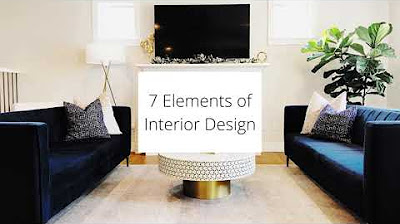INTERIOR DESIGN | Lighting Design 101 Principles, House Design Ideas and Home Decor Tips
Summary
TLDRIn this video, lighting designer Saira Kuri explains the basics of lighting design and its importance in interior spaces. She breaks down key principles such as color temperature, beam angle, and lumens to help viewers select the right light sources for different spaces. The video emphasizes creating a layered lighting plan using ambient, accent, and task lighting to enhance both function and aesthetics. Saira shares practical tips and insights for designing spaces like a professional, ensuring that lighting not only serves its purpose but also complements the overall interior design. The video is a must-watch for design enthusiasts.
Takeaways
- 😀 Lighting is fundamental in interior design and impacts how we perceive and experience a space.
- 😀 The three main characteristics of lighting sources to consider are color temperature, beam angle, and lumens.
- 😀 Color temperature, measured in Kelvin, affects the mood: warm light (2700K-3000K) for cozy spaces, neutral light (3500K-4100K) for workspaces, and cool light (5000K-6500K) for commercial areas.
- 😀 The beam angle of a lamp determines how light is distributed: narrow angles (spotlights) highlight specific objects, while wider angles provide general illumination.
- 😀 Lumens measure the brightness of a light source. Higher lumens = brighter light.
- 😀 A good lighting plan uses a combination of different layers of light, such as ambient, accent, and task lighting, to create contrast and highlight design elements.
- 😀 Ambient lighting is the base layer that provides overall illumination and sets the mood of the room.
- 😀 Accent lighting highlights specific areas or objects (e.g., artwork or architectural details) and adds style, contrast, and drama.
- 😀 Task lighting is focused lighting used for specific activities such as reading, cooking, or working.
- 😀 When choosing lighting fixtures, consider how they complement the interior design style of the space.
- 😀 A well-designed lighting plan not only enhances functionality but also reinforces the aesthetic and mood of the space.
Q & A
What role does lighting play in interior design?
-Lighting is crucial in interior design because it affects how a space is perceived, including the appearance of geometry, colors, and textures. It also influences the mood and emotions of the people within the space.
How does the color temperature of light affect a space?
-Color temperature refers to the warmth or coolness of light, measured in Kelvins. Different color temperatures create different atmospheres: warm light creates a cozy ambiance, neutral light is ideal for kitchens and bathrooms, while cool light is best for offices and commercial spaces.
What is the significance of a light source's beam angle?
-The beam angle of a lamp refers to how the light is distributed. A narrow or spot angle highlights specific objects, while a wide angle provides more general illumination, ideal for lighting large areas.
What are lumens, and how do they relate to light brightness?
-Lumens measure the total amount of visible light emitted by a source. The higher the lumen rating, the brighter the light will appear. When choosing a bulb, it's important to consider the space's size and the activities it will support.
What are the key layers in lighting design?
-Lighting design involves three main layers: ambient lighting for general illumination, accent lighting to highlight specific objects or areas, and task lighting for focused activities like reading or cooking.
What is ambient lighting, and how is it used?
-Ambient lighting is the base layer of lighting in a room. It provides overall illumination and sets the tone of the space, typically being soft and diffused. It can be incorporated through ceiling-mounted fixtures, LED strips, or wall-mounted lamps.
How does accent lighting contribute to a space?
-Accent lighting highlights specific objects or areas, creating focal points and adding contrast and drama. It enhances the aesthetic appeal by emphasizing design elements and creating defined shadows to add depth.
What is the purpose of task lighting?
-Task lighting focuses on specific areas where tasks are performed, providing brighter light for activities like reading, writing, or cooking. It's more functional than ambient lighting and helps improve visibility for particular tasks.
How do lighting fixtures contribute to a space's overall design?
-Lighting fixtures should complement the room's interior design style. A well-chosen fixture enhances both the function and aesthetics of a space, reinforcing the desired atmosphere and supporting the overall design concept.
Why did the speaker decide to pursue a master's degree in lighting design?
-The speaker was passionate about lighting's power to transform spaces and influence how people feel. This passion led to pursuing a master's degree in lighting design to deepen their knowledge and expertise in this field.
Outlines

Esta sección está disponible solo para usuarios con suscripción. Por favor, mejora tu plan para acceder a esta parte.
Mejorar ahoraMindmap

Esta sección está disponible solo para usuarios con suscripción. Por favor, mejora tu plan para acceder a esta parte.
Mejorar ahoraKeywords

Esta sección está disponible solo para usuarios con suscripción. Por favor, mejora tu plan para acceder a esta parte.
Mejorar ahoraHighlights

Esta sección está disponible solo para usuarios con suscripción. Por favor, mejora tu plan para acceder a esta parte.
Mejorar ahoraTranscripts

Esta sección está disponible solo para usuarios con suscripción. Por favor, mejora tu plan para acceder a esta parte.
Mejorar ahoraVer Más Videos Relacionados

How To Light A Space | Mistakes, Rules + Lighting In Interior Design

7 Elements of Interior Design

The Role Of Interior Design In Construction: Transform Your Space With Realty Solutions

THE 7 ELEMENTS OF INTERIOR DESIGN EXPLAINED | CREATE THE PERFECT SPACE

Retail Lighting Design (SLL Lighting Design Handbook)

Principles of Lighting Design
5.0 / 5 (0 votes)
